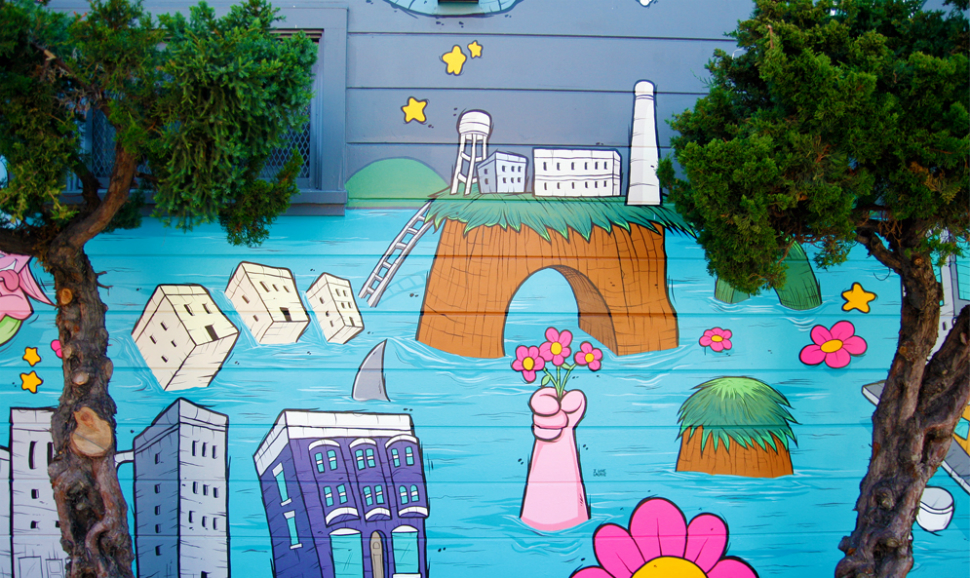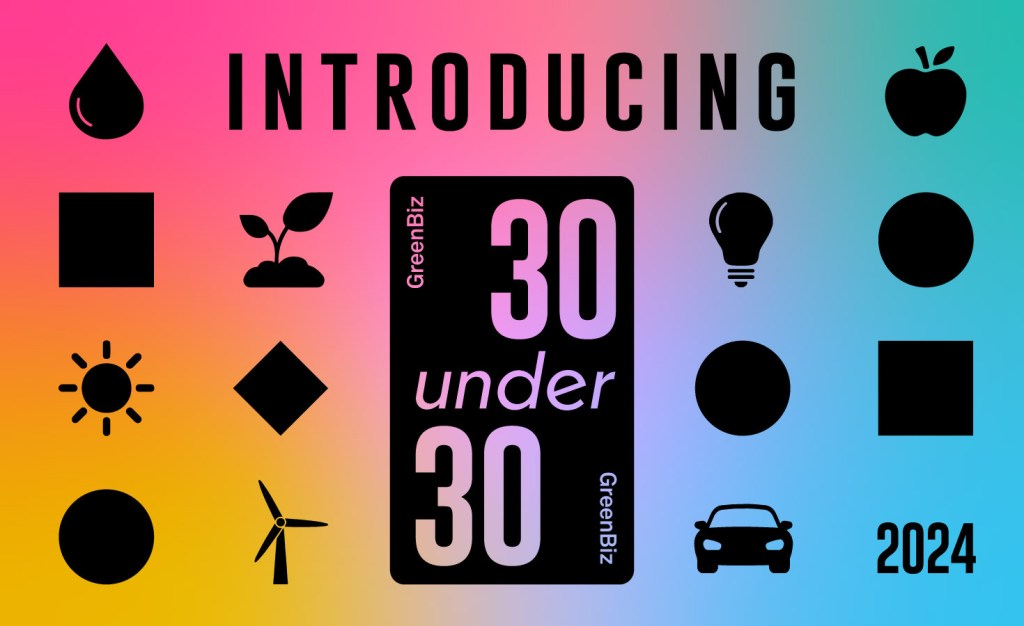10 storylines that shaped the urban debate in 2016
It’s safe to say 2016 was a year of contrasts. Read More

From the perspective of city leaders and urban activists around the world, it’s safe to say 2016 was a year of contrasts. The year saw the Olympics of urbanism take place in Quito, Ecuador, where the United Nations held Habitat III, its once-every-20-years summit on cities. We also saw a big-city backlash in elections in the United States and United Kingdom, a rural revolt whose repercussions are still unknown.
There were many other storylines in 2016, as well. We covered them from city halls and neighborhoods around the world, where some of the world’s most exciting policy innovations are happening. And we covered many more on the road to Quito, which wound through dozens of gatherings on five continents. Here are 10 global urban narratives that shaped our reporting in 2016.
1. Cities top the international agenda

The U.?N.’s Habitat III summit on cities took place in Quito, Ecuador in October. (UN-Habitat)
Cities received the full diplomatic treatment this year. The action peaked in October at the Habitat III conference, attended by 30,000 people from 167 countries. You can find all of Citiscope’s coverage from Quito here.
In the run-up to Habitat III, questions of how to plan, build and manage “sustainable” cities were the focus of four months of political negotiations by nearly all members of the United Nations. The result of those talks, the 24-page New Urban Agenda, ultimately was approved and adopted by nearly every country on earth. It will offer guidance over the next two decades.
The Habitat III process saw a global debate on urban issues that some say was unprecedented in its outreach to stakeholders and experts. While many of the most progressive views to come out of those discussions ultimately were jettisoned from the New Urban Agenda, they continue to animate advocates. Other urban observers purposefully stood outside of the official Habitat III process but nonetheless used the global cities discussion to emphasize their own urban solutions.
2. Implementing global frameworks locally

Much of the job of implementing the Sustainable Development Goals will happen in cities. (De Visu/Shutterstock)
Habitat III was the capstone to more than two years of work to push cities to the center of the global development discussion. In 2015, the urban issue had received unprecedented recognition in two landmark 15-year international accords. First came the Sustainable Development Goals (SDGs) for combating poverty, hunger, inequality and many other global problems. Then came the Paris Agreement on climate change. The bulk of the work on both will need to be carried out in cities.
With the completion of these accords, talk turned toward implementation and ways of turning their global aims into action at the local level. Both the SDGs and the Paris Agreement went into effect this year, meaning that almost every government is bound to work toward realizing the details of these frameworks. In some ways, the Habitat III conference became a jamboree on implementation, with an overwhelming focus on issues such as financing climate action in cities, platforms for cities to learn from each other and strategies for monitoring progress going forward.
3. Mayors make their case

Local leaders met in Bogota, Colombia for the Congress of United Cities and Local Governments. (UCLG photo)
The idea that mayors have a growing role on the global stage is not necessarily new, but it was amplified at key moments in 2016. At a U.N. hearing in May, cities and countries were treated as equals for the first time, with each occupying half of the allotted floor space. In September in the Hague, the first session of a new “Global Parliament of Mayors” got down to business. And in October, just ahead of Habitat III, mayors met in Bogotá and Quito to call for a larger voice for local authorities in global decision-making processes.
All of these meetings were energized by the argument that mayors are the world’s problem solvers, more pragmatic than heads of state and closer to the people. As Benjamin Barber, whose book inspired the Global Parliament of Mayors, wrote in Citiscope: “To be blunt, cities are emerging as the de facto sovereigns of the 21st century.” However, this may be easier to say than make a reality. For all their lobbying, local authorities never did win a formal role in the Habitat III negotiations. Indeed, as Harvard University’s Diane Davis wrote, “It would be naive to think that national governments will sit idly as cities and mayors seek to enter and guide global conversations on their own terms.”
4. The municipal finance challenge

Kampala’s tax service center is part of an effot to boost local revenues in Uganda’s capital. (Amy Fallon)
No conversation about building better cities gets very far before running into the question of money. How can cash-strapped local authorities pay for better transit, housing, water treatment, waste collection and other essential services? While UN-Habitat’s Joan Clos argued that urbanization essentially will pay for itself, the mechanics of making that happen are complicated.
A meeting in Mexico City in March provided five answers, including strategies for capturing more of the increase in land value associated with public investments in infrastructure such as transit. This Citiscope explainer explored another option many cities are looking at: green bonds. UN-Habitat’s Marco Kamiya wrote about the first step for countries in the Global South: taking advantage of their own domestic wealth, or “endogenous” sources of finance. And in Uganda, we looked at a local government that is doing just that, the Kampala Capital City Authority, which is proving that responsive government services can build a culture of taxpaying and boost local revenue streams.
5. The rise of ‘co-creation’

Painting a street in Quito to turn it into public space. (Christopher Swope)
The benefits of inclusive strategies to city-building have been known for years. But 2016 saw a flurry of new such projects and approaches at the local, national and international levels, indicating a growing understanding that some of the best city initiatives come from the bottom-up.
For example, Citiscope reported on how activists in Bucharest successfully lobbied to turn an unfinished reservoir from the Communist era into an officially protected nature reserve. Similarly, the Greater London Authority is using a crowdfunding platform to solicit proposals for community-driven urban regeneration projects.
A central new term here is “co-creation,” underscoring the idea that building a strong city is a community-wide effort. The ideology of co-creation played a role in this year’s Habitat III process, which saw a global mobilization of academics and indigenous groups, local authorities and philanthropies, youths and the elderly, farmers and those with disabilities — all of whom put forward specific views on how they would like to see cities evolve in coming years.
A key idea also came out of this broad process: a proposal for a Multi-Stakeholder Panel on Sustainable Urbanization, a formal, science-based mechanism to assess progress and implementation of global efforts at sustainable cities in coming years. While the proposal ultimately was removed from the text of the New Urban Agenda, analysts writing in Citiscope suggested that it was an idea that will continue to evolve in coming years.
6. Migration leads to cities

Dutch youth and refugees live together in an Amsterdam housing project. (Stadsdeel Nieuw West)
The issue of migration reached a tipping point in 2016, as the number of people displaced by war, disaster and other calamities reached a record high. More than half of those people are living in cities, not refugee camps. Yet the humanitarian community has been slow to adapt to a more community-based approach to aid, and a major U.N. summit on migration largely failed to address the role of cities in this crisis.
As European nations struggled to respond and anti-immigrant rhetoric roiled the U.S. presidential race, cities were setting a more inclusive example. City leaders began talking about fostering a sense of “urban citizenship” as something distinct from refugee status. Citiscope chronicled one innovative example of this thinking in Amsterdam, where Dutch youths and refugees not only live together in a new housing project but share responsibility for everything from property maintenance to organizing movie nights. Another case came from Nashville, where we found an innovative strategy that aims to cultivate a new generation of civic leadership from within the city’s many immigrant communities.
7. Looking beyond ‘megacities’

Tabitha Kakuze is the only planner in rapidly growing Jinja, Uganda. (Amy Fallon)
The world’s very largest cities typically receive the most attention. This is in response to their crushing population concerns and often severe pollution problems but also to their massive economic opportunities, diversity and capacity for innovation. Megacities illustrate everything we’re most fearful of and most optimistic about with regard to urbanization, after all — and they often have the clout to make themselves heard.
But policymakers are increasingly recognizing that interventions in “secondary” or “intermediate” cities are also necessary. These are not only the fastest-growing urban areas on the planet but also tend to be underfunded by central governments. The resulting dearth of capacity to put in place smart planning today to deal with the looming population crush of tomorrow finally is starting to be recognized at all levels of authority.
8. Seeing public health as an urban issue

Cleaning up waterways in Manila is both an environmental issue and a public health issue. (Asian Development Bank and ABS–CBN Lingkod Kapamilya Foundation photos)
From the emergence of the Zika virus in the Americas to November’s wave of lethal air pollution in Delhi, 2016 reminded us that most of the world’s biggest health challenges are urban in nature.
Cities are responding. In a move that will improve air quality in Athens, Madrid, Mexico City and Paris, the mayors of those cities this month announced they would ban diesel vehicles by 2025. In Durban, we chronicled a global model for improving public health by providing clean water and sanitation in informal urban settlements. And in Citiscope’s most-read story of the year, we found that Manila’s approach to cleaning up its river improved health outcomes in surrounding neighborhoods.
Health issues also gained traction within the Habitat III process, although it didn’t start out that way. The final draft of the New Urban Agenda included language related to air pollution, road safety, sanitation, disease prevention and access to reproductive health-care services. As Canadian public health scholar Trevor Hancock wrote, healthy cities “create opportunities for economic participation for all their citizens.”
9. Recognizing the ‘right to the city’

The call for a ‘right to the city’ made it into the New Urban Agenda. (Fotos593/Shutterstock)
In 1968, French philosopher Henri Lefebvre coined the term “right to the city.” Nearly a half-century later, this concept is maturing into a political force to be reckoned with, as advocates seek to enshrine it in national and international law.
While definitions vary, advocates of this idea generally argue that legal mechanisms should exist to fight back against gentrification and real estate speculation in favor of affordable housing. Their goal is to make cities accessible to all types of inhabitants — the poor, undocumented immigrants, ethnic and cultural minorities, single women and their children, people in informal housing and the homeless, among other vulnerable populations.
Following tense negotiations leading up to Habitat III, this concept finally was enshrined in the New Urban Agenda. It proved to be one of the talks’ main sticking points, as a coalition of Latin American countries led by Brazil and Ecuador championed the idea despite significant pushback from a number of powers, including the European Union, the Russian Federation and the United States.
10. The rural revolt

Rural voters in the U.?S. propelled Donald Trump’s successful presidential bid. (Christine Ruddy/Shutterstock)
We live in an urban century — but tell that to voters, who this year fueled a populist revolt against big cities. Donald Trump’s election as president of the United States was propelled by white rural voters and is widely seen as a rejection of big-city multiculturalism. Similarly, the decision by British voters to leave the European Union was viewed as a repudiation of London and its globalist ways. As if to cement the divide, immigrant-friendly London elected a Muslim mayor, Sadiq Khan, as Londoners wondered aloud if they could remain part of the E.U. as an autonomous city-state.
Elsewhere, Filipinos elected as president the hard-liner Rodrigo Duterte, who has prosecuted mayors during the course of a ruthless anti-drug campaign. Italians rejected political reforms that sunk Prime Minister Matteo Renzi’s pro-E.U. leadership. Next on the electoral docket: French and German elections that could disintegrate the twin pillars of a “European project” that has favored the interconnectedness of metropolitan areas regardless of national borders. Germany spent 2016 championing a vision of rural-urban harmony under the guise of “integrated territorial development.” Is it too late?












